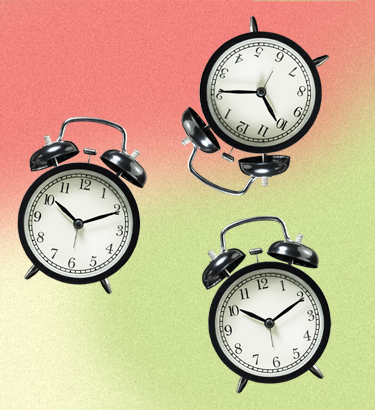Testosterone levels spike during the late teenage years and remain at their peak during your partner’s 20s.


How the Penis Ages: A Visitor's Guide
Bodies change as we grow older, and dicks are no exception. Despite this basic fact, accurate representation of aging penises is hard to come by, an issue exacerbated by a deep-rooted, cultural aversion to discussions of "senior sex." This invisibility makes it hard to know what to expect for our genitals as we move through life and especially what to consider when it comes to aging alongside a partner.


To understand how the penis changes through life, it’s important to first know about the early stages of sexual maturation, otherwise known as puberty.
This series of gradual changes starts with the enlargement of the scrotum and testes, followed by the penis. Next comes pubic hair, which initially grows long and soft before becoming darker and coarser. During this pivotal time, involuntary erections and occasional wet dreams are commonplace, as the body produces increased levels of testosterone and develops secondary sex characteristics.
These changes can be delayed by puberty blockers, sometimes prescribed to trans youth to alleviate the impact of gender dysphoria or to children experiencing precocious puberty. A 2020 study published in Pediatrics, the official journal of the American Academy of Pediatrics, found these medications to have “favorable mental health outcomes” and noted that “the resultant pubertal suppression is fully reversible, with the resumption of endogenous puberty after their discontinuation.”

Testosterone levels spike during late teenage years and remain at their peak during your partner’s 20s, which means the penis is likely to be in its prime fertility. But this doesn't necessarily mean that the markers of peak testosterone, like high sperm count, an increased sex drive, aggression and plenty of hair, will be present in your partner.
It's also difficult to determine an individual's testosterone levels or to define what counts as 'normal' during this age range, according to a 2019 Harvard University newsletter which explained that “blood levels of testosterone vary dramatically over time and even during the course of the day.”
Penises in this age bracket aren’t particularly prone to issues such as shrinkage or erectile dysfunction, although again, this isn't a blanket rule: Studies have found a correlation between ED and other psychological factors, such as post-traumatic stress disorder. Overall though, at least medically speaking, these years do represent the penis in the prime of its life.

Studies have found a correlation between erectile dysfunction and other psychological factors, including post-traumatic stress disorder.


Aesthetically, dicks don’t change too drastically throughout their lifespan. There might be some mild shrinkage, but “penises don’t change much in appearance, except for the typical skin changes that occur with age all over the body,” confirmed Los Angeles urologist Paul Turek, M.D.
Medically, it’s a different story. Testosterone levels typically drop at around age 40, which can lower libido and cause problems with erectile dysfunction, which becomes more likely as the penis grows older. Experts have estimated that 50 percent of men over the age of 40 experience at least some level of ED, which grows in prevalence as men age.
This age range is also more likely to be impacted by Peyronie’s Disease, a condition that increases curvature in the penis. This isn’t always a cause for concern. As this thorough explainer breaks down, it’s entirely possible to continue regular, satisfying visits down south even as the likelihood of these difficulties increases.
Experts estimate that 50 percent of men over the age of 40 experience at least some level of ED, and this percentage grows in prevalence as men age.

As the penis enters its twilight years, the testicles will begin to shrink and further shrinkage of the penis might occur. “Aging is associated with erections that are harder to get, harder to maintain and less firm once obtained,” confirmed Turek. According to statistics cited in a 2017 edition of the Turkish Journal of Urology, “aging increases the risk of erectile dysfunction from 1.2 percent per year for men ages 40 through 49 and 4.6 percent for men ages 60 through 69.”
None of this means your partner’s dick will morph overnight. “These changes usually occur quite slowly, often imperceptible until older age,” Turek clarified. “Sudden, dramatic changes to erection quality usually reflect acute changes in body health, medications, hormone balance or illness and disease.”
There are also a handful of ways to keep penises feeling and acting younger, which range from diet and exercise to sex and masturbation. As a regular visitor, there’s plenty you can do to help keep your partner’s penis as active as possible for as long as possible.

Diet, exercise, sleep, sex and masturbation are a few ways to keep penises feeling and acting younger.


An elderly penis doesn’t have to be an inactive penis. Alongside a handful of obvious workarounds—there are ways to orgasm and experience sexual pleasure that don’t involve your partner’s penis— extensive research is yielding new alternatives for erectile dysfunction. A 2016 study published in F1000 Research outlined a handful of treatments such as shockwave therapy and stem cell transplants, all longer-term solutions than the likes of sildenafil, commonly known by the brand name Viagra.
Non-surgical and non-pharmaceutical treatments include wearable devices, such as a vacuum pump that pulls blood into the penis or a constriction device such as Eddie by GiddyⓇ, which is designed to treat ED by constricting the veins in the penis, but not the arteries or urethra, to optimize blood flow and help maintain erections. Wearable treatments are a good option for anyone wanting to avoid the little blue pill.
There’s still progress to be made, but discussions about "senior sex" are gradually trickling into the mainstream, meaning that soon we’ll all see more realistic representations of what to expect as our bodies grow older. In the meantime, if you happen to start regularly visiting a penis in its twilight years, rest assured there are countless ways to maximize your enjoyment, and your partner’s.
'Changes usually occur slowly, often imperceptibly until older age, while dramatic changes to erection quality usually reflect changes in health, medications, hormone balance or illness.'









